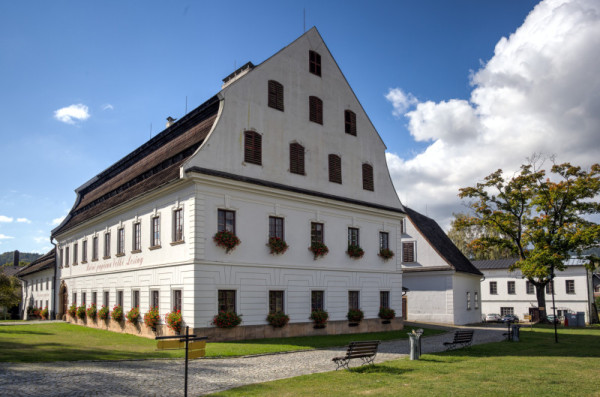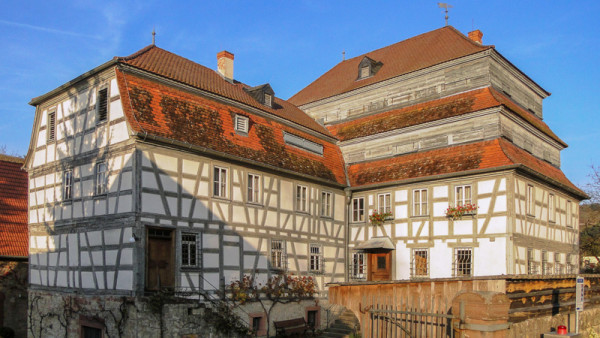Our initiative: paper mills on the UNESCO list
Information about the initiative consisting in inscribing the most precious European paper mills on the UNESCO list
The era of paper mills had begun in Europe in the 13th century. Several thousand paper mills where the paper was manufactured manually were created within the period of more than half a thousand years. Even if in the 20th century, a small number of former paper manufacturing facilities was still operational, and a few of them even survived until today, it should be assumed that traditional papermaking based on simple water powered machines and manual drawing of paper pulp on sieves was replaced by factories using papermaking machines during the 20th century.
Only 30 former papermaking facilities have survived in Europe until today and they are the witnesses of historical manufacturing technology. Paper mill in Duszniki-Zdrój (Poland) constitutes one of the most interesting examples, and for 50 years, it houses the Museum of Papermaking. The museum in Duszniki is realizing the concept of preparing the application for inscribing several most precious historical paper mills on the UNESCO list. Papermaking museums in Poland (Duszniki-Zdrój), Czech Republic (Velkie Losiny) and Germany (Homburg) are currently cooperating in this field.
Duszniki-Zdrój (Poland)
The early days of papermaking in Duszniki date back to the period before the year 1562. Unfortunately, in 1601 the flood destroyed part of the buildings belonging to the facility. Gregor Kretschmer, a paper maker of that time, reconstructed the mill and in 1605 the papermaking process was resumed. The mill experienced its greatest splendour in the 17th and 18th century. At the time, papermakers from Duszniki were modernizing the production as well as decorated the mill, which became one of the most beautiful industrial facilities in Europe. Ornaments in the shape of rosettes and half-rosettes over the windows from the side as well as roof covers performed in the shape of scrolls, protecting the drying room against the driving rain, constitute unique elements, present exclusively in this mill. Equally exceptional are wall paintings performed in residential spaces of former papermakers.
In the 18th century, a five-story mill and a six-story drying room became one of the highest buildings in Duszniki. The function of subsequent rooms was characteristic for numerous paper mills (paper manufacturing and treatment on the ground floor, drying spaces in the attics).
In the 19th century, as a result of the development of machine paper manufacturing technique, the economic situation of the mill in Duszniki was gradually deteriorating. In 1905, in order to save the facility, Karl Wiehr, its owner at the time, installed in the building the machine manufacturing cardboard. Nevertheless, during the period of the economic crisis, Wiehr’s situation was becoming worse and worse and he stopped the production. In 1939, the paper mill was sold to the town, with the intention of creating a museum there.
In 1945, the mill, the condition of which was in permanent decline, was taken over by the state. In the 1960s its renovation began and in 1968, the Museum of Papermaking was inaugurated. In 1971, the manufacturing of paper according to the historical technique was re-established.
The museum in Duszniki is the biggest manufacturer of handmade paper in Poland and the only facility of this kind which on its own designs and manufactures sieves enabling the production of papers with watermarks.
In 2011, the mill gained the status of the monument of history, which opened the way to inscribing it on the UNESCO world heritage list.

Velkie Losiny (Czech Republic)
Paper mill in Velkie Losiny was established in the years 1591-1596. At the turn of the 18th and 19th century, it acquired its current shape. In the 19th century, apart from big competition of modern paper factories, the facility in Losiny continued its activity according to the former technique. It resulted from the fact that handmade paper was applied for the manufacturing of filters for different branches of the industry.
After the Second World War, the paper mill was nationalized and museum halls were created there. Until the year 2006, the mill was the property of a joint-stock company.
In 2002, the paper mill was entered by the government of the Czech Republic into the register of national cultural monuments. It was also included on the UNESCO information list, which constituted the beginning of activities aiming at inscribing the facility on world heritage list.
The paper mill in Velkie Losiny is a complex of several shingled brick and mortar buildings preserved in good condition. Similarly to the paper mill in Duszniki, the area on the ground floor was used for preparing raw materials as well as paper manufacturing and treatment. Multi-story attics served as drying rooms.
In the museum section, information concerning the history of papermaking as well as manufacturing traditions in Velkie Losiny is displayed. Museum tour also includes a visit in the room where paper is drawn manually. Paper mill in Velkie Losiny is one of the biggest manufacturers of handmade paper in Europe.

Homburg (Germany)
The paper mill in Homburg in Germany dates back to the year 1807. It is located by the Main River (Bavaria State). It was relocated there from Windheim beam after beam. The mill in Windheim dated back to the 17th century. In the 19th century, a small machine for the manufacturing of cardboard was installed in the mill.
The building served similar functions as other paper mills: manufacturing was taking place on the ground floor and the paper was dried in the attics. The water wheel as well as other equipment from the old mill were preserved, together with the cardboard machine dating back to the second half of the 19th century.
In 1997, after performing extensive renovation works, the Museum of Paper was inaugurated, together with the manufacturing facility. The facility is run by Johannes Follmer, the descendant of former papermakers, and the activity of the museum is financed by the Mein Spreesatr County.
***
We aim at establishing the cooperation with several paper mills from other European countries which represent exceptional value. Our goal is to prepare the application for the inscription on the UNESCO list of ca. 5-8 historical paper mills which witnessed the manual technique of the manufacturing of paper.


